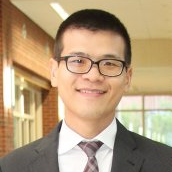Advances in Cardiovascular Tissue-Engineering
A special issue of Bioengineering (ISSN 2306-5354). This special issue belongs to the section "Regenerative Engineering".
Deadline for manuscript submissions: 31 May 2024 | Viewed by 13693
Special Issue Editors
Interests: bioengineering of cardiovascular implants and therapeutics; ATMPs; cell and gene therapy; angiogenesis; ischemic and reperfusion injury; translational cardiovascular medicine
Interests: cardiovascular heart valve biomechanics; multi-scale modeling; biomaterials design
Special Issues, Collections and Topics in MDPI journals
Special Issue Information
Dear Colleagues,
The regenerative ability of the human body is limited, and the number of tissue and organ donations has been declining for years, while the morbidity and mortality rates of cardiovascular disease have been increasing. Cardiovascular tissue engineering theoretically offers the possibility of treating a wide range of structural diseases of the heart and vascular system. However, to date, cardiovascular tissue engineering is not yet ready for routine clinical use. However, the rapid development of various techniques in basic research, engineering, and translational medicine have raised the legitimate hope of improving the future therapy of cardiovascular diseases.
In addition to holistic organ transplantation, many approaches focus on the stepwise regeneration or bioartificial replacement of partial cardiovascular structures, e.g., heart valves, cardiac patches, bioartificial vessels, or stem cell transplantation in areas of myocardial infarction.
In addition to the technical challenges of biological manufacturing, the current focus is also on the risks of these future therapies; tumorigenicity, graft rejection, immunogenicity, and cell migration are major problems of tissue engineering that have not yet been fully solved.
Therefore, this Special Issue of Bioengineering on the Advances in Cardiovascular Tissue Engineering focuses on the interdisciplinary research in and development of cardiovascular science and engineering by bringing together cutting-edge contributions from worldwide experts on translational medicine, engineering, cell and gene therapy, bioprinting, bioreactor design, bioprocess development, and the manufacturing of stem-cell-based therapies.
Dr. Rouven Berndt
Dr. Chung-Hao Lee
Guest Editors
Manuscript Submission Information
Manuscripts should be submitted online at www.mdpi.com by registering and logging in to this website. Once you are registered, click here to go to the submission form. Manuscripts can be submitted until the deadline. All submissions that pass pre-check are peer-reviewed. Accepted papers will be published continuously in the journal (as soon as accepted) and will be listed together on the special issue website. Research articles, review articles as well as short communications are invited. For planned papers, a title and short abstract (about 100 words) can be sent to the Editorial Office for announcement on this website.
Submitted manuscripts should not have been published previously, nor be under consideration for publication elsewhere (except conference proceedings papers). All manuscripts are thoroughly refereed through a single-blind peer-review process. A guide for authors and other relevant information for submission of manuscripts is available on the Instructions for Authors page. Bioengineering is an international peer-reviewed open access monthly journal published by MDPI.
Please visit the Instructions for Authors page before submitting a manuscript. The Article Processing Charge (APC) for publication in this open access journal is 2700 CHF (Swiss Francs). Submitted papers should be well formatted and use good English. Authors may use MDPI's English editing service prior to publication or during author revisions.
Keywords
- cardiovascular disease
- bioengineering
- tissue-engineering
- ATMPs
- cell and gene therapy
- peripheral arterial disease
- stem cells
- heart valve, myocardial infarction
- bioartificial organs
- 3D-bioprinting
- bioreactor
- regenerative medicine
- translational medicine







